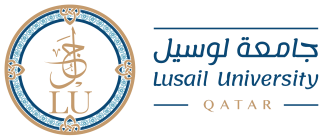الآليات الدولية لمكافحة الفساد: اتفاقية الأمم المتحدة لمكافحة الفساد أنموذجاً
يوليو 10, 2024 2025-03-12 10:04الآليات الدولية لمكافحة الفساد: اتفاقية الأمم المتحدة لمكافحة الفساد أنموذجاً
الآليات الدولية لمكافحة الفساد: اتفاقية الأمم المتحدة لمكافحة الفساد أنموذجاً
Submitted: 30 July 2023
Accepted: 05 October 2023
DOI: https://doi.org/10.70139/rolac.2023.1.4
عميد عاصم خصاونه، أستاذ القانون الدولي العام المساعد، جامعة لوسيل
akhasawneh@lu.edu.qa
رانية بلقاسم المازني، محاضر في القانون، جامعة لوسيل
rmazni@lu.edu.qa
الملخص
يُعد الفساد ظاهرة إجرامية متعددة الأشكال في جميع دول العالم، لذلك فإنّ مكافحته لا تتم إلا من خلال الآليات الدولية. وتعتبر الاتفاقية الأممية لمكافحة الفساد الصادرة في سنة 2003 أهم إطار دولي مرجعي للدول في مكافحة الفساد. تهدف الدراسة الحالية إلى معرفة الآليات الدولية المتعلقة بمكافحة الفساد وفقاً لاتفاقية الأمم المتحدة بهذا الخصوص باستخدام المنهجين الوصفي والتحليلي، حيث اعتُمد المنهج الوصفي لتحديد الطبيعة الخاصة بجرائم الفساد والقواعد الموضوعية والإجرائية ذات الصلة في حين وُظِّف المنهج التحليلي لتحديد كيفية النظر في هذه الجرائم في الآلية الدولية الموجودة. وخلصت الدراسة إلى عدد من النتائج أبرزها عدم وجود مفهوم شامل واحد ومحدد ومتفق عليه للفساد يحظى بموافقة جميع الباحثين. كما لم تتضمن اتفاقية الأمم المتحدة قيد الدراسة تعريفاً قانونياً واضحاً ومحدداً للفساد. تبيّن أيضاً أنّ الإطار التشريعي للاتفاقية المذكورة تضمّن بنوداً خاصة بالتدابير الوقائية لمكافحة الفساد، حيث تم النص عليه في المواد (5، 6، 10 و13). كما تضمّنت الاتفاقية تدابير ردعية تجرم مختلف أفعال وصور الفساد التقليدي وغير التقليدي. ولم تكتف الاتفاقية الأممية بتجريم الجرائم المتعلقة بالفساد، بل امتد نطاق تجريمها الى إلزام الدول الأعضاء بتجريم ومعاقبة كل موظف عام يقوم باستغلال نفوذه والمتاجرة بالسطلة الموكلة له من أجل تحقيق مكاسب غير مشروعة. لكن الاتفاقية، وفقاً للمادة (17) منها، اقتصرت في جريمة اختلاس المال العام على الموظف العمومي الوطني فقط دون أدنى إشارة إلى الموظف العمومي الأجنبي أو الموظف المدني في منظمة دولية عمومية. أوصت الدراسة بضرورة تضمين الاتفاقية الأممية إجراءات رقابية وتنفيذية.
الكلمات المفتاحية
الفساد، الآليات الدولية، مكافحة الفساد، اتفاقية الأمم المتحدة
International Anti-Corruption mechanisms: The United Nations Convention against Corruption as a model
Ameed Asem Khasawneh, Assistant Professor, Public International Law, Lusail University
akhasawneh@lu.edu.qa
Rania Mazni, Lecturer, Lusail University
rmazni@lu.edu.qa
ABSTRACT
Corruption is considered a multifaceted criminal phenomenon worldwide, and its combat is only effective through international mechanisms. The United Nations Convention against Corruption, issued in 2003, is regarded as the most important international framework for countries in combating corruption. The current study aims to understand the international mechanisms related to combating corruption according to the United Nations Convention, utilizing both descriptive and analytical methodologies. The descriptive approach was adopted to identify the specific nature of corruption crimes and the relevant substantive and procedural rules. Meanwhile, the analytical method was used to determine how to address these crimes within the existing international framework. The study concluded several noteworthy results, including the absence of a comprehensive, agreed-upon definition of corruption that satisfies all researchers. Additionally, the United Nations Convention did not include a clear and legal definition of corruption under study. It was also revealed that the legislative framework of the convention incorporates specific provisions for preventive measures against corruption, as stipulated in Articles 5, 6, 10, and 13. The convention also includes deterrent measures that criminalize various forms of traditional and non-traditional corruption acts. The United Nations Convention goes beyond merely criminalizing corruption-related crimes; it extends to obliging member states to criminalize and punish any public official who abuses their power and engages in trading influence for illicit gains. However, the convention, according to Article 17, limits the crime of embezzlement of public funds to national public officials, without any reference to foreign public officials or civil servants in international organizations.The study recommended the necessity of incorporating supervisory and executive measures into the United Nations Convention
Keywords
Corruption; international mechanisms; combating corruption; United Nations Convention
2024 ©
Khasawneh and Mazni, licensee LU Press. This is an open access article distributed under the terms of the Creative Commons Attribution license CC BY 4.0, which permits unrestricted use, distribution and reproduction in any medium, provided the original work is properly cited
للاقتباس: عميد عاصم خصاونه ورانية بلقاسم المازني، الآليات الدولية لمكافحة الفساد: اتفاقية الأمم المتحدة لمكافحة الفساد أنموذجاً، مجلة مركز حكم القانون ومكافحة الفساد، 1:2023، DOI: https://doi.org/10.70139/rolac.2023.1.4
To read the full article: Click Here
لقراءة المقال: اضغط هنا

